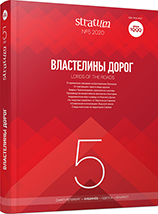Монетное обращение в Добрудже в VI—VII вв.
The Monetary Economy of Dobrudja during the Migration Age (6th—7th centuries)
Author(s): Andrei GândilăSubject(s): History, Archaeology, Economic history, Middle Ages, 6th to 12th Centuries
Published by: Издательский дом Stratum, Университет «Высшая антропологическая школа»
Keywords: Dobrudja; Lower Danube; quaestura exercitus; Justinian; follis; solidus; Avars; Slavs; barbaric incursions
Summary/Abstract: Coin circulation in early Byzantine Dobrudja has always been correlated with events known from the written sources. The intepretation of coin hoards and single finds aimed to shed more light on the political and military events unfolded in the region during the age of the Avaro-Slavic invasions, which culminated with the collapse of the Byzantine frontier on the Lower Danube. Employing a different methodology, the present study evaluates the numismatic evidence in Dobrudja in the wider context of the Mediterranean world. By removing coin finds from the limited sphere of contemporary chronicles with their emphasis on barbaric incursions and transferring it to the realm of archaeological research, we are in a better position to reconstruct important socio-economic mechanisms during this age marked by dramatic cultural transformation. The gold and bronze coins found in dozens of settlements in Dobrudja reveal a high degree of standardization, which points to the fact that most coins arrived in the province as payment for the garrisons defending the frontier and for the mobile troops billeted in local towns. Low-value coins reflect the frequency of daily transactions both in towns and fortresses, while the presence of coins issued at mints like Carthage, Rome and Alexandria reflects the circulation of people and goods across the Mediterranean.
Journal: Stratum plus. Археология и культурная антропология
- Issue Year: 2020
- Issue No: 5
- Page Range: 363-376
- Page Count: 14
- Language: Russian
- Content File-PDF

